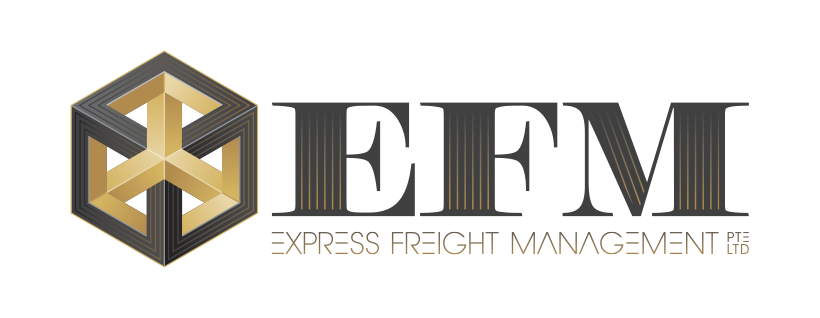The Customs Clearance Process Explained

Mastering customs clearance isn’t about knowing a single set of rules—it’s about understanding how to navigate the unique complexities of different international trade lanes. A shipment to the EU is not the same as one to South America.
To illustrate the strategic approach required, this guide will use one of the world’s most dynamic and nuanced corridors as a case study: the USA-ASEAN trade lane. The principles we explore here will not only demystify this critical region but will provide a framework for navigating any complex customs challenge you face.
The 5 Universal Stages of Customs Clearance
Every customs entry follows a fundamental five-stage path. This sequence is the foundation of global trade. Understanding it allows you to anticipate needs and prevent delays at every step.
Stage 1: Documentation Preparation & Verification
This is the foundation for the entire process. Your customs broker gathers all necessary trade documents from the shipper and receiver. They then verify this information for accuracy and completeness before any official filing. Simple errors here can cause significant delays later.
Further Reading: The Importance of Accurate Documentation in Customs Clearance
Key documents almost always include:
- A Commercial Invoice, which details the transaction and value of the goods.
- A Packing List, which outlines the contents, weight, and dimensions of each package.
- A Bill of Lading for shipments moving via Sea Freight, or an Air Waybill for goods sent by Air Freight.
- A Certificate of Origin, which verifies the country where the goods were manufactured.
Stage 2: Customs Filing & Submission

Your broker submits the verified documents to the customs authorities in the destination country. Today, most of this happens through an Electronic Data Interchange (EDI) system. This digital submission provides officials with advance notice of your shipment’s arrival.
Stage 3: Inspection and Examination
Customs authorities review your filing and assess the shipment’s risk. They may choose to release the goods based on the documents alone. Alternatively, they can select the shipment for inspection. This can range from a simple X-ray scan to a full physical unloading and examination of the cargo.
Stage 4: Duty & Tax Calculation and Payment
Officials calculate the duties, tariffs, and taxes owed. This amount is based on the product’s classification code, value, and the destination country’s regulations. The importer must pay these charges in full before the goods can be cleared.
Stage 5: Release of Goods
After all duties and taxes are paid and any inspections are complete, customs authorities release the cargo. The goods are cleared to leave the port or airport. They can then continue their journey to the final destination.
Case Study
The five stages provide the “what,” but expertise shines in the “how.” The USA-ASEAN trade lane, covering ten member nations like Singapore and Vietnam, shows how local knowledge turns a standard process into a competitive advantage.
Documentation Nuances
The ASEAN Trade in Goods Agreement (ATIGA) aims to reduce trade barriers within the region. For goods manufactured and shipped within ASEAN, a Certificate of Origin known as Form D is critical. Correctly filing Form D can reduce import tariffs to zero for over 98% of goods. Missing or incorrectly filing this single document can cost thousands of dollars in otherwise avoidable taxes.
Navigating Country-Specific Systems and Regulations
Each ASEAN country has its own digital systems and regulatory hurdles. An experienced partner knows how to navigate them. In Indonesia, for example, all import data must be processed through the mandatory Indonesia National Single Window (INSW) system. Failure to file correctly in the INSW can leave cargo stranded for weeks. Vietnam, on the other hand, enforces rigorous Product Quality Inspections (PQI) on certain imports, requiring specific registrations before the shipment even arrives.
Pro-Tip: Classifying Goods with the AHTN
The world uses the Harmonized System (HS) to classify products. However, ASEAN uses its own specific version called the ASEAN Harmonized Tariff Nomenclature (AHTN). While based on the HS, the AHTN has more detailed sub-categories. Using a standard HS code instead of the correct AHTN code will result in an incorrect duty calculation and an automatic rejection of your customs filing.
Key Principles
The lessons from the ASEAN corridor provide a clear framework for success in any trade lane. Mastering customs is not about memorizing thousands of rules. It is about applying a consistent strategic approach.
This strategic framework involves three core principles:
- Master Paperwork Proactively
- Documentation is not just about compliance; it is about creating cost advantages with agreements like ATIGA.
- Local Expertise is Non-Negotiable
- Every country has unique systems like the INSW that require specialized, on-the-ground knowledge.
- Accurate Classification is Paramount
- Understanding regional classification systems like the AHTN is critical for both speed and budget.
The customs clearance process follows a universal pattern but demands a strategic approach tailored to each specific trade lane. By understanding the principles of proactive documentation, local systems, and accurate classification, you can turn a potential bottleneck into a smooth and efficient part of your supply chain.
Struggling with the complexities of your specific trade lane? While this guide used the USA-ASEAN corridor as an example, our expertise covers global logistics. Contact our team for a no-obligation consultation today and let us build a framework for your success.
For nearly two decades, Express Freight Management has been the trusted partner for businesses shipping between the United States and Southeast Asia. We handle the technological complexity for you, managing everything from carrier selection and customs clearance to warehousing. Discover a streamlined approach to logistics with Express Freight Management for your shipping needs between the United States and Brunei, Cambodia, Indonesia, Laos, Malaysia, Myanmar, Philippines, Singapore, Thailand, and Vietnam today!
